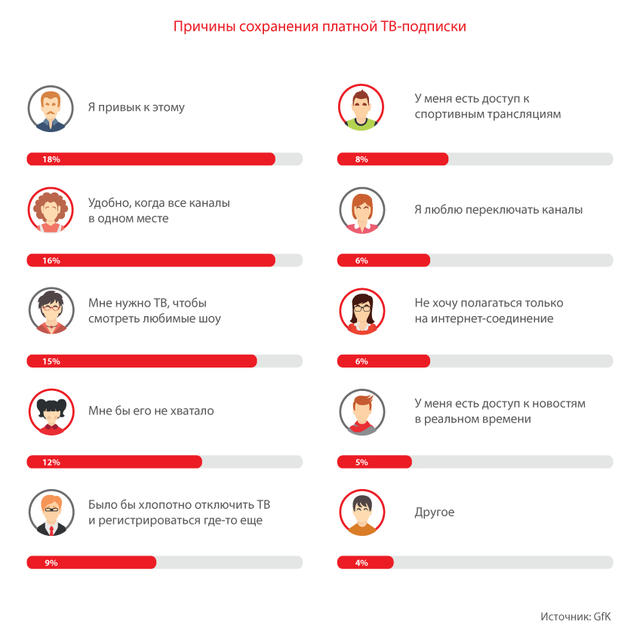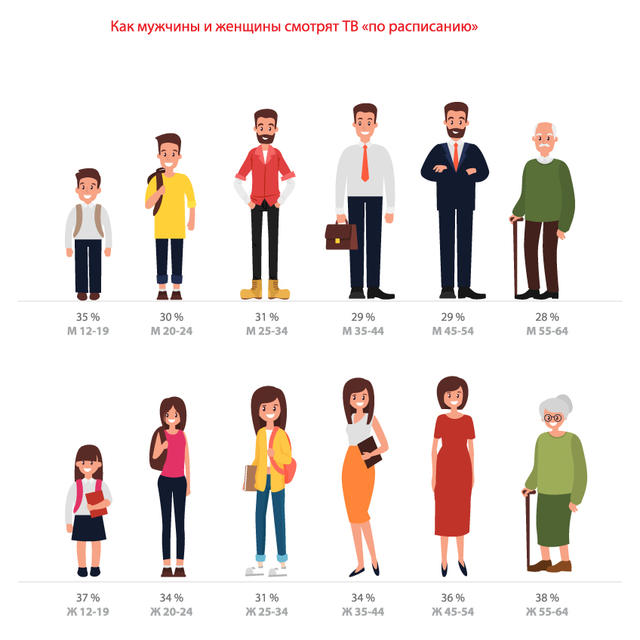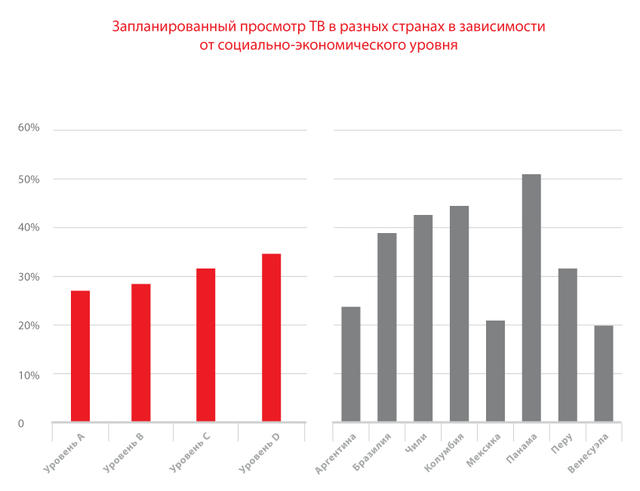Who is watching?

We draw a portrait of a modern viewer in different parts of the world. Feel the difference between the United States and Latin America in a BROADVISION analyst report.
Who is the modern viewer? Who gathers in the evenings with relatives and friends to watch the broadcast of the match or your favorite show. Do you know your subscribers well? We have gathered data from audiences around the world to help you answer these questions.
In the first part of the study, we consider the western hemisphere, namely: the USA and Latin America.
Audience preferences
No matter how it sounds, a person after a difficult working day prefers not to be bothered. And they made a choice for him. Indeed, if you think about it, modern advertisers and service providers already have the necessary knowledge base: data on TV viewing time, preferences, work or leisure - this is enough to understand what a subscriber needs.
It should not be overlooked that in a dynamic world, a person does not have enough time to spend with loved ones, and he appreciates the moments when a family gathers in front of a TV screen.

An experiment called "TV detox" showed the dependence of people on watching TV. Viacom Global Insights partnered with research company Think to conduct an unusual study. His goal was to study the feelings and behavior of people who were isolated for several days from watching TV content on any device.
The experiment was attended by over 16 thousand people, aged from 6 to 44 years from 14 countries. In the first five days, respondents were forbidden to watch almost any TV: paid, free airtime, cable networks, video on demand, TV in the applications of channels and providers. Allowed only streaming subscriptions - SVOD.
The next five days went the opposite way: the study participants were deprived of the opportunity to watch video by subscription, but were allowed to watch TV.
At the end of the experiment, the audience replied that during the five-day isolation from television, they lacked the emotions and feelings that TV gives: feelings of relaxation, a sense of belonging to the family, common interests and family pastime, a desire to keep abreast of what is happening and find out for themselves what something new. At the same time, most noted that without watching a subscription video they lived much easier than without the ability to watch TV in the usual way.
United States
New research says the average person in the United States watches TV almost five hours a day, an hour more than the average in the largest countries in the world.
In fact, the peak of watching television came in 2009-2010. Then the average American family spent 8 hours and 55 minutes a day in front of the TV. In the "zero" was observed the most significant increase in viewing time for a decade. Over the past 8 years, content sources such as Facebook, YouTube, Netflix, and other resources have reduced the time they use to watch TV by just an hour. But the American family still spends more than 7 hours and 50 minutes a day near the TV.
Contrary to expert forecasts, “cord cutting” —that is, the abolition of traditional pay-TV subscriptions in favor of on-demand streaming services — has not yet become a mass phenomenon in the United States.
Although the decrease since the 2nd quarter of 2009 is more than three million subscribers, this is by no means a mass trend that many expected after Netflix, Amazon Prime and other online services reached their peak.
While the growth of online video has certainly not made it easier for pay-TV providers, most consumers seem not to be planning on unsubscribing to pay-TV.
71% of US consumers watch cable or satellite TV and do not plan to abandon it. When asked about the main reason “not to cut the cable,” 18% of respondents said that they were just used to it, while 16% said it was convenient to watch many channels in one place.

Latin America
As part of a large-scale study, TGI Latin asked respondents whether they planned to watch TV. 32.6% replied that he was on their daily schedule. This in itself should be seen as a wonderful phenomenon, in which one third of the population plans their lives around television programs.
Survey results help to better understand viewers and their preferences. For example, in any age group, women have a higher level of addiction to TV. Among men, adolescents have the highest commitment. Interestingly, the highest rates are among the youngest and oldest groups.

The next graph is indicators of the socio-economic standard of living.
The highest - A = 10%,
Lower - D = 40%.
It can be concluded that the overall level of television viewing decreases with the growth of the socio-economic level. While television is the main form of entertainment for the lower class, it is not so important for the upper social classes.
Watching TV is directly related to the standard of living in the country. Mexico has the lowest. At the same time, Mexico is the largest exporter of Hispanic programs for all of Latin America.

Based on the results of the study, we can conclude what types of video content will be more relevant in a particular country. For example, those people who are more likely to watch TV on schedule are more likely to watch the development of the television series, talk shows, and religious programs.
Television in Brazil

Brazilians spend more than five hours a day watching television.
In Brazil, having a TV means social inclusion. This is the most popular content source in the country: at least one TV is in 95% of Brazilian homes. Brazilians directly associate TV with status: the more and more advanced the TV, the richer the family.
Brazilians are happy to watch almost any content: from football to soap operas, which men watch on a par with women, and see nothing wrong with that.
Conclusion

Television has long been an important part of our lives. But people view content in different ways. The older generation is almost not distracted by business and does not switch channels. Men are spontaneous, and women more often plan leisure time in advance. But there are no groups that do not watch TV at all - anyway, it is present everywhere.
Spectators don't always need a choice. In front of the TV I want to relax, relax and spend time with my family. Therefore, the importance of TV in the life of a modern person is difficult to overestimate, even despite the differences between generations and mentality.
